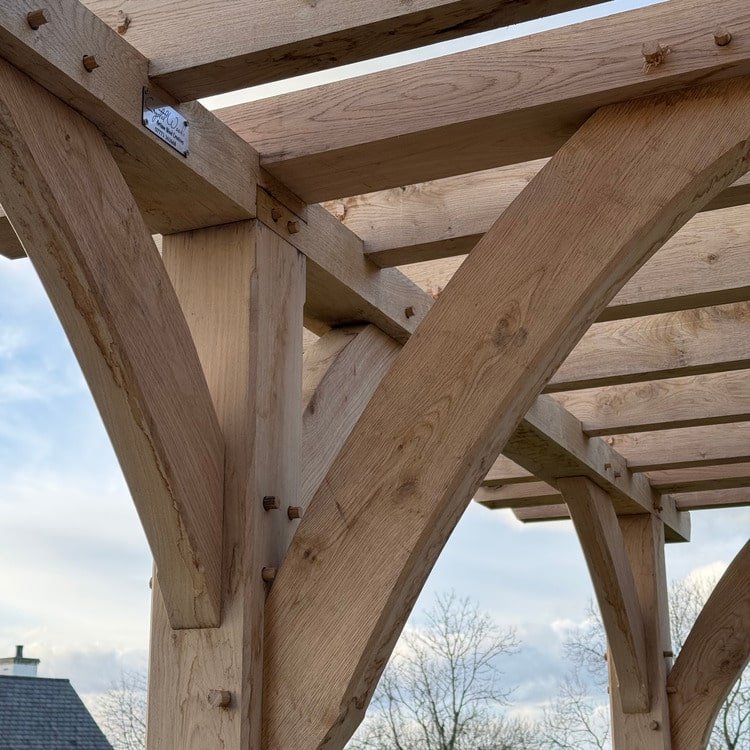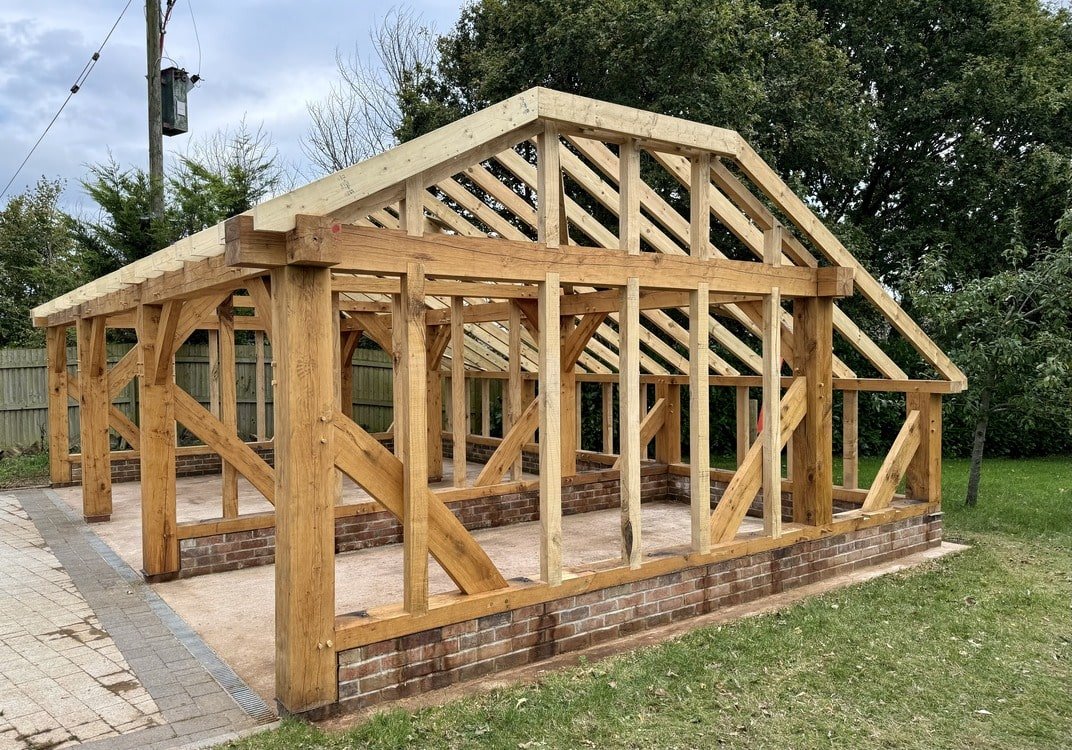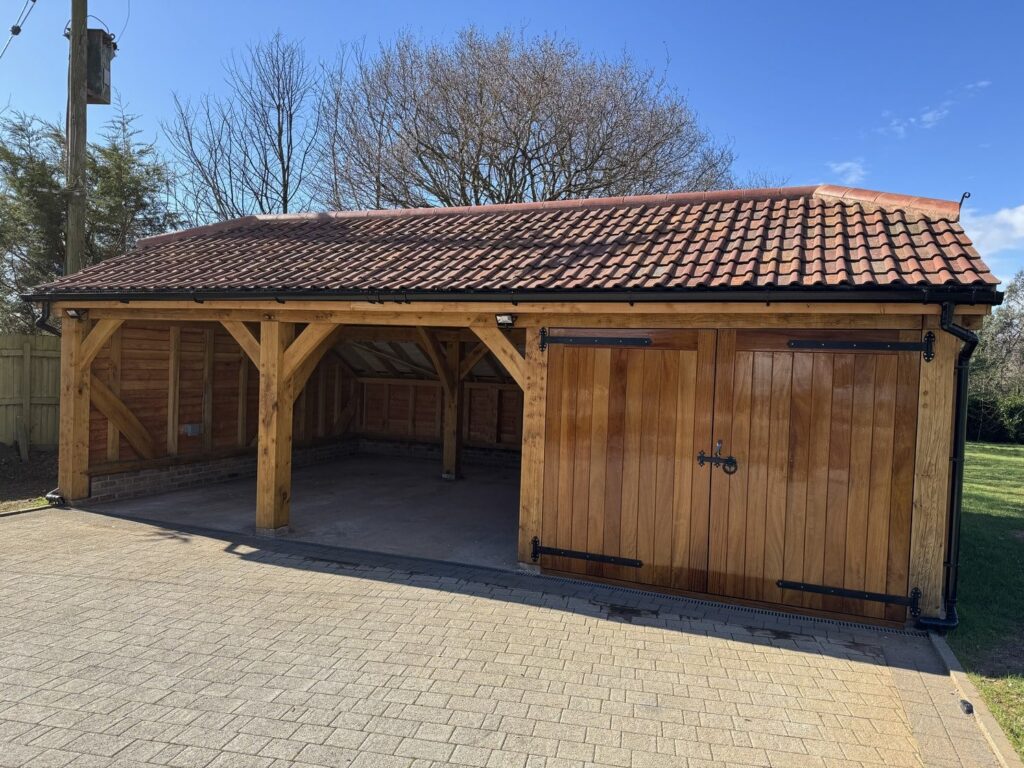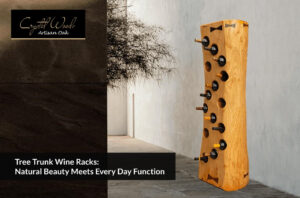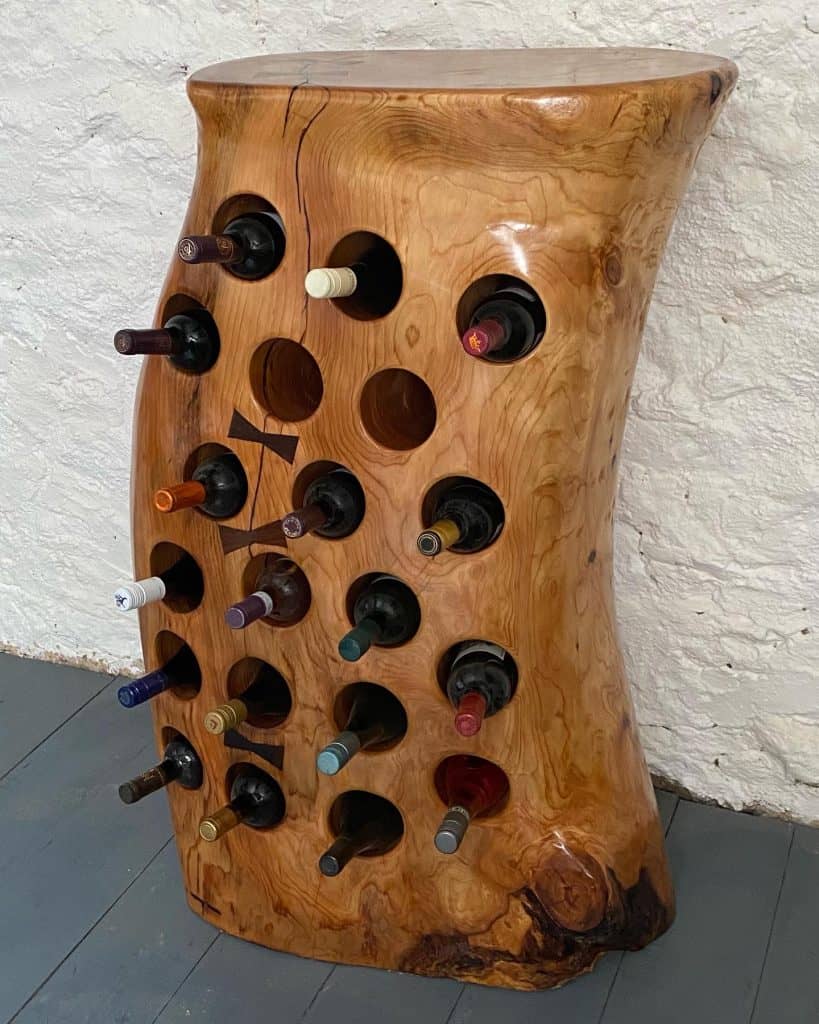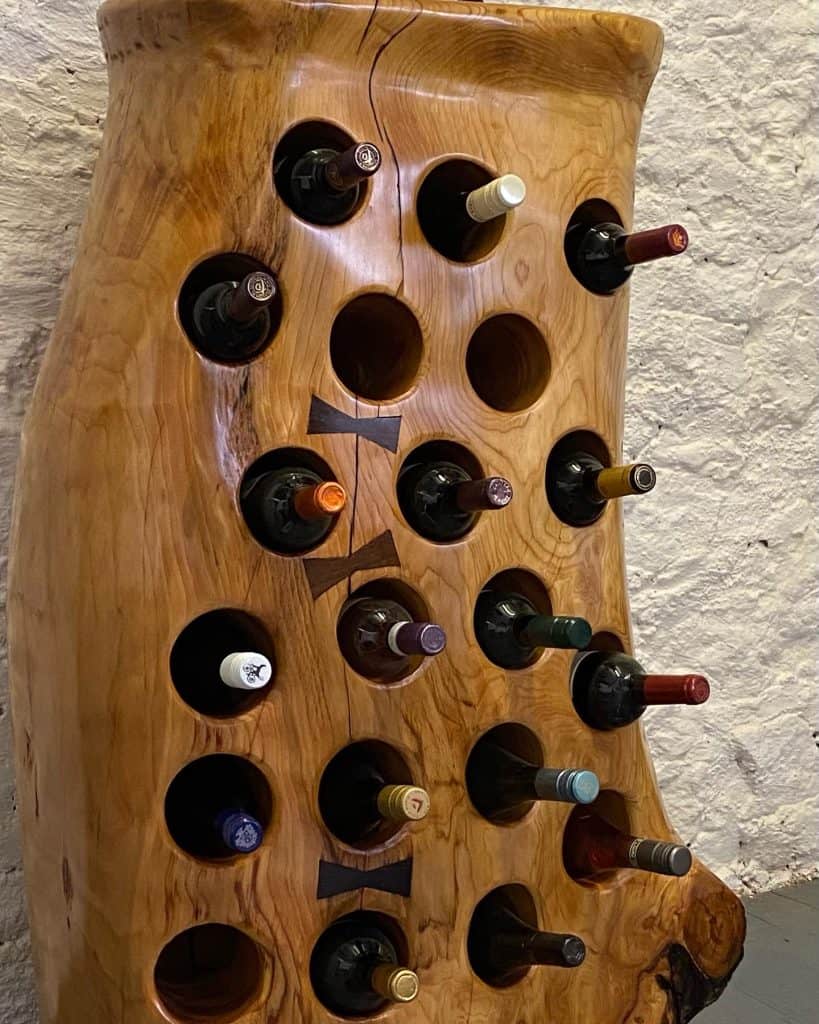There’s a reason oak has been trusted for centuries. From medieval barns and Dartington Hall’s great timber structures to today’s bespoke oak pergolas and garden buildings, oak has always carried a sense of strength, warmth, and permanence. But when we talk about green oak timber, we’re not describing its colour. “Green” means oak that is freshly cut, full of natural moisture and ready to be worked by hand. For craftsmen, fresh sawn oak beams are some of the most rewarding timbers to shape: pliable yet incredibly strong, destined to last for generations. As it dries, green oak begins to settle. Joints tighten, beam sections harden, and its natural oak beauty deepens: warm honey tones shift into golden hues for interior design, or weather to a silvery grey outdoors. Every movement tells the story of a material alive with character.
What makes green oak different from seasoned oak?
Freshly sawn oak harvested within the last 18 months is considered green oak. Its high moisture content (often 60-80%) makes it softer and easier to cut than seasoned timber. By contrast, seasoned oak beams have been air- or kiln-dried to lower the moisture:
- Air-dried oak: naturally dried to around 30% moisture.
- Kiln-dried oak: industrially dried to as little as 12%.
The distinction matters. Green oak is ideal for structural timber framing because its flexibility allows precise joinery, and as it dries, joints naturally tighten. Seasoned oak is better suited to applications where movement must be minimal, such as doors, windows, or furniture panels.
Why craftsmen still prefer green oak timber
Oak is prized for its strength-to-weight ratio, which actually surpasses steel. It’s dense enough to carry huge loads, yet soft enough when freshly cut to allow traditional oak framing methods such as mortise and tenon. Other key properties include:
- Shrinkage and movement: Green oak timber shrinks across the grain as it dries, creating natural splits known as shakes. Far from flaws, these add character and lock joints tighter.
- Durability: High tannin levels protect oak from pests and decay, helping oak frames last centuries without chemical treatment.
- Workability: Craftsmen enjoy shaping green oak compared to seasoned oak, though tools need frequent sharpening.
- Visual appeal: Indoors, oak wood matures into rich golden hues. Outdoors, it develops that iconic silver-grey patina.
Benefits of green oak construction
Opting for green oak beams or a full frame construction brings distinct advantages:
- Strength that improves with age: As the timber dries, joints tighten and frames become stronger.
- Sustainable choice: When sourced from well-managed woodlands and sustainably managed forests, oak is one of the most responsible building materials available.
- Consistent quality: Locally sourced oak ensures reliable supply and reduces the carbon footprint compared to imported timber.
- Low maintenance: With the right method of construction, oak frames can last for centuries.
- Versatility: From bespoke oak pergolas in gardens to oak sleepers for landscaping, green oak adapts to a wide range of uses.
Challenges and how they’re managed
Like all natural oak, green timber comes with considerations:
- Movement and shrinkage: Oak can shrink up to 5% radially in its first years, so it isn’t suited to doors or windows without careful design.
- Tannin staining: Oak’s tannins react with iron, so stainless steel or brass fixings are used to prevent marks.
- Tool wear: Dense, moisture-rich beams can be demanding on tools — but with sharp edges, oak works beautifully.
Experienced framers embrace these quirks, building timber structures that not only tolerate movement but also thrive on it.
How green oak is used today
Despite its history, green oak remains a modern favourite in both traditional and contemporary projects:
- Timber framing and beam sections: For trusses, posts, rafters, and full-frame homes.
- Oak-framed extensions: Light-filled spaces with vaulted ceilings and exposed beams.
- Garden buildings: From gazebos to bespoke oak pergolas, creating elegant outdoor structures.
- Interior design: Mantelpieces, staircases, and statement beams that add warmth and authenticity.
- Furniture and landscaping: Handmade tables, benches, and oak sleepers used in gardens and landscaping projects.
Conclusion
Green oak timber isn’t just a building material, it’s part of Britain’s living heritage. From English woodlands to historic frames, it represents a sustainable method of construction that balances beauty, strength, and responsibility.
For those who embrace its nature, green oak offers authenticity, longevity, and the quiet satisfaction of knowing your frame will outlast generations. Few materials carry such consistent quality or such a direct link to our landscape and craft traditions.
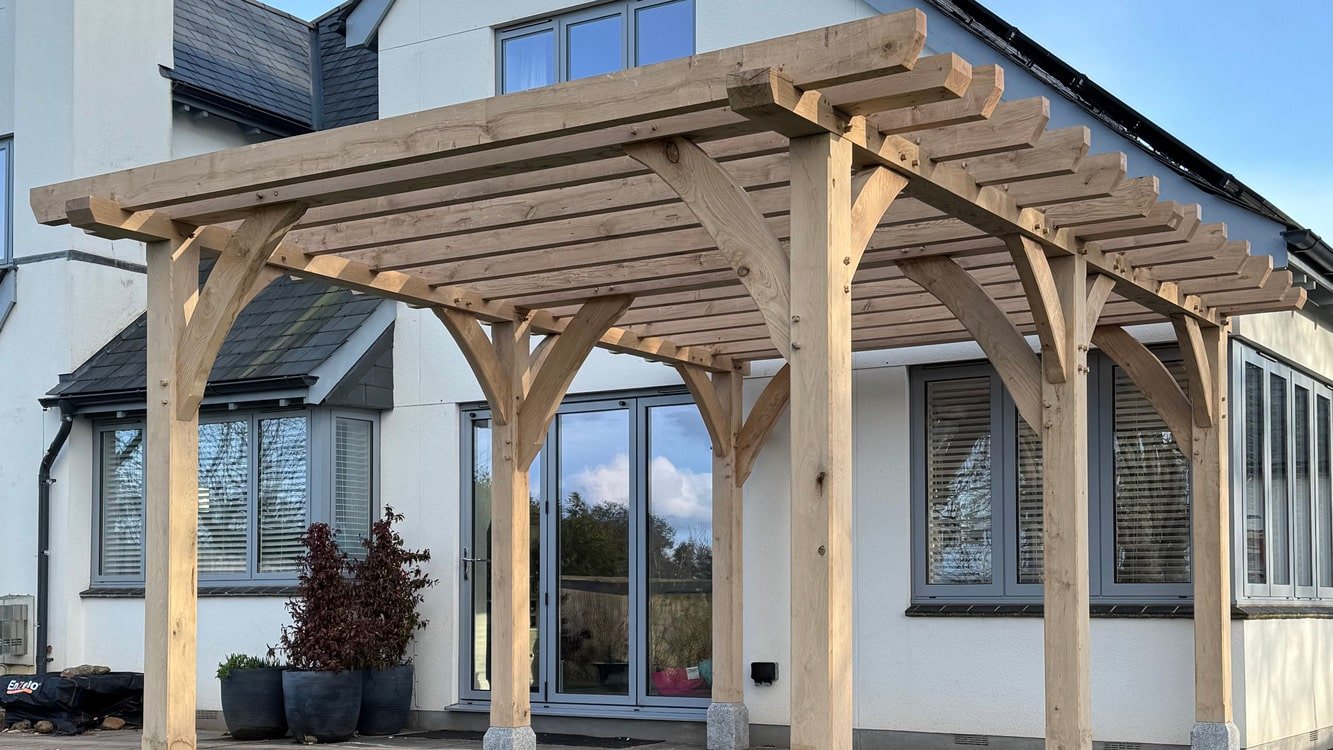
Frequently asked questions about Green Oak Timber
What is green oak timber used for?
Green oak is most commonly used in timber structures such as oak frame homes, trusses, posts, and extensions. It’s also popular for cladding, decking, bespoke oak pergolas, and oak sleepers in landscaping.
Does green oak crack as it dries?
Yes, green oak develops small splits known as shakes. These are natural and do not compromise strength, in fact, they often help joints tighten.
How is green oak different from seasoned oak?
Green oak is freshly cut with high moisture content (60–80%), making it easier to work. Seasoned oak beams are air- or kiln-dried for stability, suited to joinery where minimal movement is essential.
How long does green oak last in construction?
With proper design, green oak frames can last for centuries. Many traditional oak buildings in South West England remain structurally sound after hundreds of years.
Is green oak sustainable?
Yes. When sourced from well-managed woodlands and sustainably managed forests, oak is one of the most environmentally responsible choices. Compared to steel or concrete, it’s a far more sustainable method with a much lower carbon footprint. 